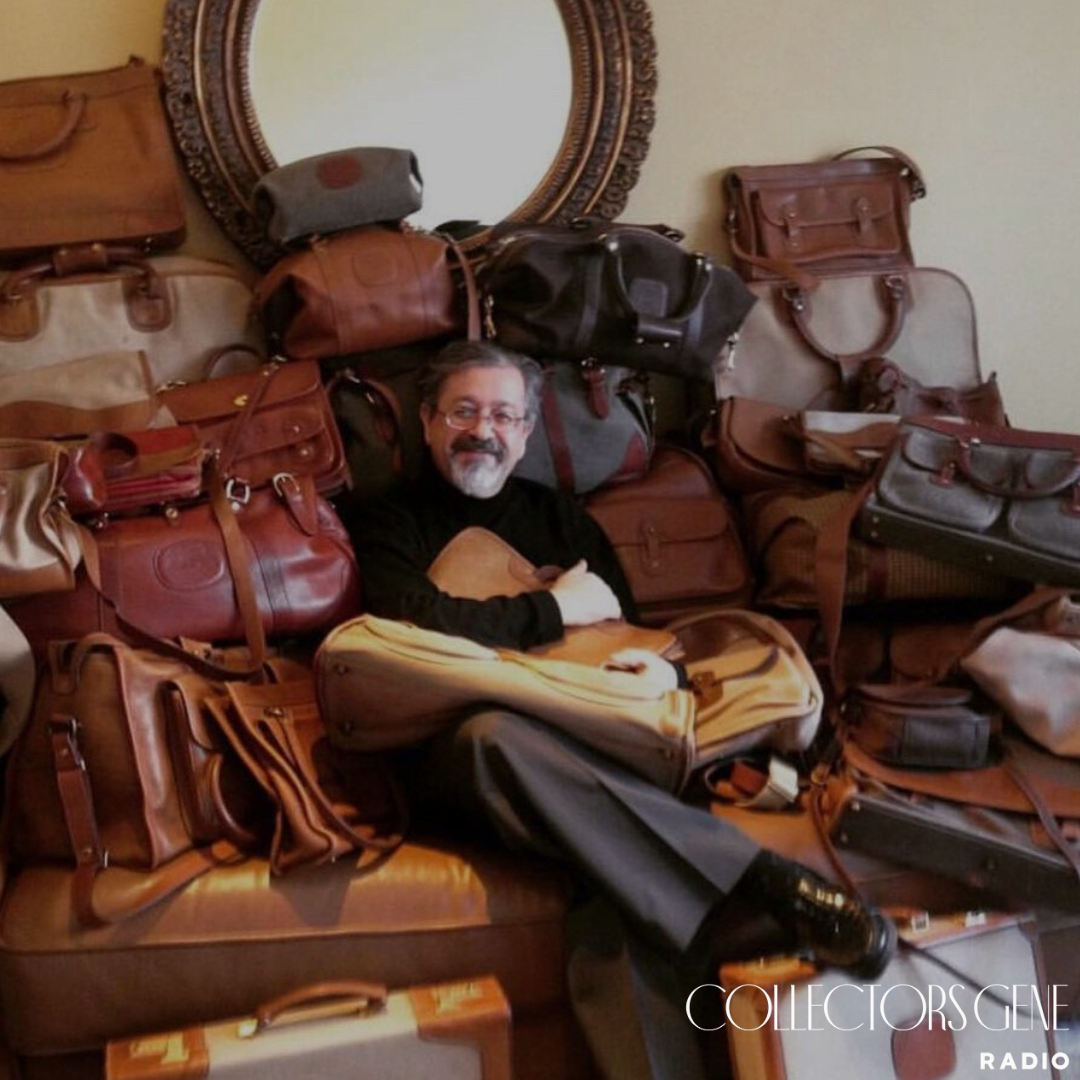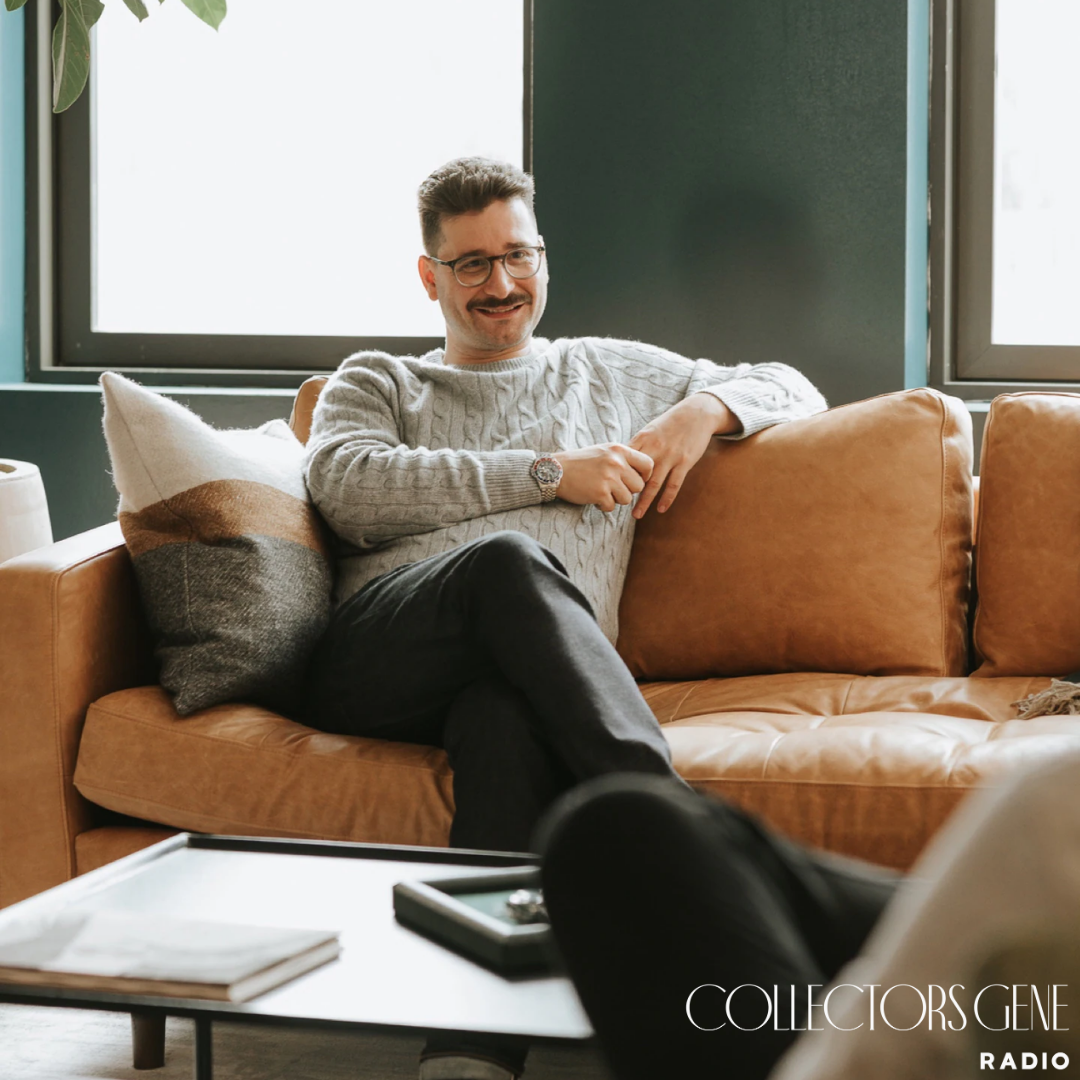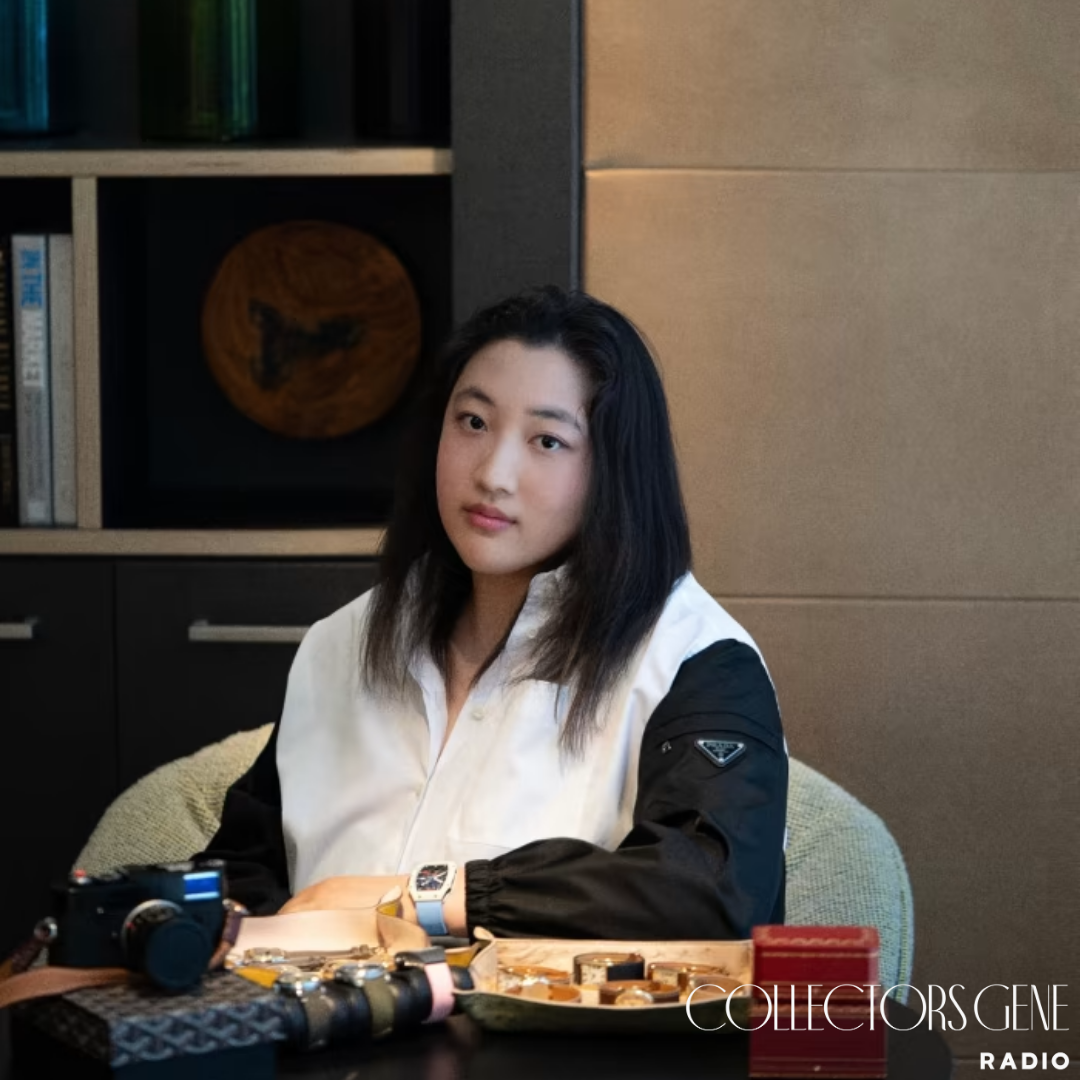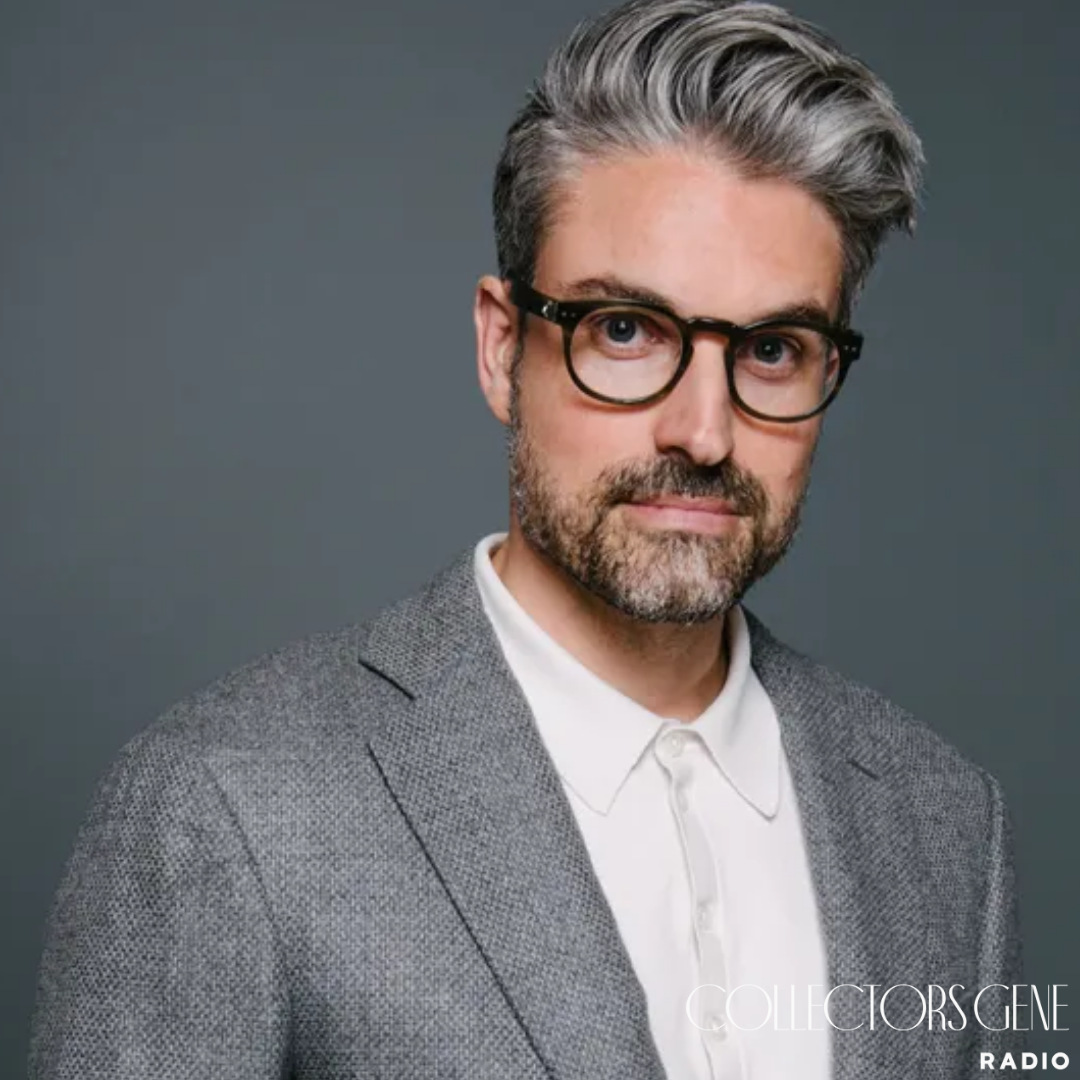Every now and then, I meet someone whose story forces me to expand my definition of what it means to collect. We’ve heard of garages filled with vintage Ferraris, safes full of Patek Philippes, and apartments that double as mid-century furniture showrooms. But 3,000 leather bags? Specifically, Ghurka bags? That’s Alex Hassan’s world. His collection grew so vast that he bought an entire townhouse in Chicago simply to house it.
I’d followed Alex online for years before we spoke. His Instagram is a kind of archive-in-motion: row after row of Ghurka pieces, each meticulously maintained, photographed, and cataloged. What struck me wasn’t just the scale, but the discipline behind it. Every bag is stuffed, moisturized, brushed, and vacuumed on a precise six-month schedule. A team of leather experts, including one in his 80s, spends a week at a time servicing them. What to most people would look like luggage is, to Alex, cultural heritage worth preserving.
Discovering Ghurka
Alex’s introduction to Ghurka came in the 1980s, while finishing his PhD research in Japan. On weekends, he golfed with executives from Toyota and Sony, who carried sleek leather bags that caught his attention. When he asked, they told him the brand was American: Ghurka.
Fate doubled down when he returned to Chicago. His office sat half a block from Ghurka’s Michigan Avenue store, and nearly every day he would step inside and walk out with another piece. His first was a golf bag, which he still owns, though he now has five more for good measure. Collecting snowballed quickly. Ten became fifty, fifty became hundreds, and eventually the number climbed above 2,500.
Why Pre-2003 Matters
Alex’s obsession isn’t with Ghurka broadly, but specifically with bags made before 2003, when founder Marley Hodgson still oversaw production. Those early years were marked by obsessive craftsmanship. Vegetable tanning alone could take weeks, with hides treated in nearly 20 stages before being cut. The leather came from cattle weathered by climate rather than raised in controlled environments, producing tougher, richer skins.
When Hodgson sold the company in 2003 and production shifted partly overseas, Alex drew a line. Even when Ghurka returned production to the U.S. a decade later, the leather was different. For Alex, collecting “Best of Marley” pieces became a way to preserve an era of uncompromising craft that will never be repeated.
A Townhouse of Leather
Housing thousands of leather bags is no small feat. Left unstuffed, leather collapses; untreated, it cracks. Alex designed an almost archival system. Each bag is filled and conditioned, stored in climate-controlled rooms, and brushed bi-annually. Twice a year, his maintenance team works for days just to keep them alive.
At its peak, the collection reached nearly 3,000 pieces. He’s since pared back, donating hundreds to charity and partnering with Ghurka itself to launch their official vintage program. Still, walking through his townhouse feels less like visiting a storage unit and more like stepping into a living museum of American leathercraft.
Collecting with Purpose
In 2015, Alex launched his own site, (BestOfMarley.com) to sell archival pieces directly, with all proceeds going to charity. That decision was shaped by a pivotal trip back to Iran in 2010, where he visited his sister, a teacher in a remote community. There he saw Afghan refugee children denied schooling, many working in brick factories before they were old enough to read.
Shaken, Alex decided to act. Using funds raised from his Ghurka collection, watches, and other assets, he built a school and clinic for those children. He supplied boots, uniforms, and even buses to take them to a movie theater, their first time seeing a film on the big screen.
In that moment, bags became more than leather and brass. They became classrooms, vaccines, and meals. For Alex, the pleasure of “the chase” eventually gave way to the joy of what the collection could create for others.
The Collectors Gene Rundown
The One That Got Away: A portfolio commissioned by President Reagan and gifted to his cabinet staff. Alex once owned one, sold it for $2,500, and later tried to buy it back at double. The buyer refused.
The On Deck Circle: A Mercedes 300 S. He once restored a 1957 model, the year he was born, before selling it. Finding another would feel like reclaiming part of his story.
The Unobtainable: Ghurka No. 1, the brand’s very first bag. It belongs to Marley Hodgson’s grandson, and Alex knows it will never leave the family.
The Page One Re-Write: If not Ghurka, Alex would immerse himself in manuscripts and rare books. He already owns a 750-year-old handwritten Persian poem which is a glimpse of what that alternate path might look like.
The GOAT: His father, who passed down a love of books and collecting. Before his death, he donated his own manuscript collection to libraries. Alex sees his own work as an extension of that legacy.
The Hunt or the Ownership: The thrill of the hunt has softened. Today, ownership matters most not for the objects themselves, but for how they can be transformed into opportunity for others.
Do You Feel That You Were Born With The Collector’s Gene?: Without question. He grew up surrounded by his father’s manuscripts and his mother’s protests about the space they took up. He jokes that he inherited both sides.
Closing Thoughts
Alex Hassan’s story is proof that collecting doesn’t have to be about hoarding or flexing. His townhouse of Ghurka bags may look like the obsession of a completist, but at its core it’s about preservation, scholarship, and generosity. He collects with the precision of a curator and the heart of a humanitarian.
Every guest on Collectors Gene Radio brings a different perspective, whether it’s Matt Hranek chasing the thrill of flea markets in France, Count Giberto preserving Venetian glassmaking, or Jason Fried weaving design into his daily rituals. Alex adds a dimension I find particularly moving: the idea that collecting can be redirected outward, turning personal passion into public good.
For me, that’s collecting at its most powerful.





